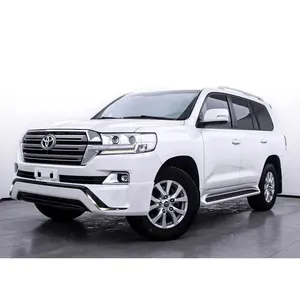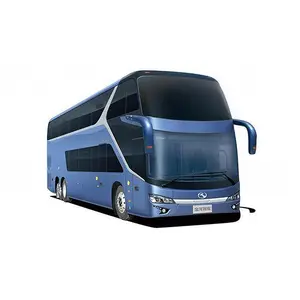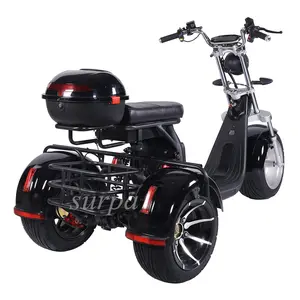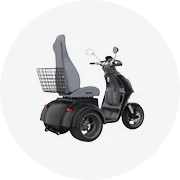Phổ biến trong ngành của bạn

Tùy Chỉnh Mùa Hè Trẻ Em Của T-Shirt Ngắn Tay Áo Crewneck Chàng Trai Cô Gái Áo Thun Áo Thun Kẹo Màu Trống Trẻ Em T Áo Sơ Mi
2,68 US$ - 3,73 US$
Đơn hàng tối thiểu: 20 Cái
Vận chuyển mỗi chiếc: 1,38 US$


Hot bán trẻ em ảnh video máy ảnh bé in máy ảnh in nhanh infantil trẻ em HD máy ảnh
23,00 US$ - 24,50 US$
Đơn hàng tối thiểu: 500 Cái
Vận chuyển mỗi chiếc: 6,82 US$


Phổ biến thiết kế mùa hè không tay bé gái ăn mặc sequined multi-lớp trẻ em phần Váy cưới cô gái ăn mặc cho 2-10 năm
Sẵn sàng vận chuyển
7,92 US$ - 8,22 US$
Đơn hàng tối thiểu: 2 Cái
Vận chuyển mỗi chiếc: 9,68 US$


Hàng Mới Về Quần Áo Trẻ Em Smocked Trang Phục Cửa Hàng Thêu Băng Chuyền Tay Phồng Cho Bé Gái Bộ Bé Gái In Tùy Chỉnh
8,00 US$ - 12,85 US$
Đơn hàng tối thiểu: 30 Cái
Vận chuyển mỗi chiếc: 3,17 US$


Chuyên Nghiệp 1080P 2.4 Inch Đồ Chơi Trẻ Em Hình Ảnh Tự Sướng Quà Tặng Máy Ảnh Hình Ảnh Ngay Lập Tức In Máy Ảnh Kỹ Thuật Số Cho Trẻ Em Kid Máy Ảnh
Sẵn sàng vận chuyển
16,70 US$ - 19,70 US$
Đơn hàng tối thiểu: 2 Bộ
Vận chuyển mỗi chiếc: 12,14 US$


Trẻ Em HD Máy Ảnh Kỹ Thuật Số Ống Kính Kép 1080P Ốc Ngay Lập Tức Ngoài Trời Cầm Tay Mini Máy In Nhiệt 32GB Được Xây Dựng Trong Bộ Nhớ CMOS Hình Ảnh
10,86 US$ - 12,32 US$
Đơn hàng tối thiểu: 20 Cái

Phim Hoạt Hình Kid Ảnh Tự Sướng Đồ Chơi Trẻ Em Kỹ Thuật Số Video Máy Ảnh Ngay Lập Tức In Trẻ Em Máy Ảnh Cho Bé Trai Cô Gái Với Hình Ảnh Máy Ảnh Quà Tặng Đồ Chơi
14,39 US$ - 16,55 US$
Đơn hàng tối thiểu: 2 Cái
Vận chuyển mỗi chiếc: 11,17 US$

OEM Trẻ Em Kids Baba Quần Áo Phù Hợp Với Thiết Kế Hình Ảnh Bán Buôn Thoải Mái Và Thoáng Khí Quần Áo Bé Trai Mùa Hè Quần Áo Set
4,33 US$ - 5,30 US$
Đơn hàng tối thiểu: 800 Bộ

Trẻ Em Máy Ảnh Cho Cô Gái Và Chàng Trai, Kỹ Thuật Số Máy Ảnh Kép 2.0 Inch Màn Hình Phim Hoạt Hình Ảnh Tự Sướng Máy Ảnh Kid Đồ Chơi Cho Món Quà Sinh Nhật
5,98 US$ - 7,58 US$
Đơn hàng tối thiểu: 10 Cái
Vận chuyển mỗi chiếc: 9,59 US$

Bộ Đồ Lót Phổ Thông Dễ Thương Cho Bé Trai Và Bé Gái 100% Cotton Phim Hoạt Hình Áo Len Cho Bé Quần Áo Trẻ Em
7,98 US$ - 11,98 US$
Đơn hàng tối thiểu: 100 Bộ
Vận chuyển mỗi chiếc: 2,71 US$

Máy Ảnh Vui Nhộn Cho Trẻ Em Bán Chạy Máy Ảnh Kỹ Thuật Số Cho Trẻ Em Máy Ảnh Hd Cho Trẻ Em Sạc Usb Cho Bé Trai Và Bé Gái
15,50 US$ - 20,00 US$
Đơn hàng tối thiểu: 2 Cái

New Fake Vest Quần 2 Mảnh Phù Hợp Với Sinh Viên Nhật Bản Chàng Trai Cô Gái Đồng Phục Học Sinh Thiết Kế Hình Ảnh
3,73 US$ - 4,56 US$
Đơn hàng tối thiểu: 5 Bộ
Các tìm kiếm liên quan:
tracheaewww com hot girl boy boyphim hoạt hình trẻ em hàn quốctên của bé trai và bé gáihình ảnh cô gái nhật bảnhình ảnh cô gái xinh đẹp trung quốchình ảnh cô gái trung quốchot 18 cô gái hình ảnhcô gái hôn một cậu béhình ảnh cô gái nhỏ gợi cảmlehenga choli cô gáihình ảnh cô gái trung quốccô gái 8 12 tuổihình ảnh của các cô gáitên bé gái

Đồ chơi sang trọng màu đen và trắng bò búp bê Sofa Gối Vải Búp Bê vài món quà chàng trai và cô gái
Sẵn sàng vận chuyển
2,26 US$ - 3,55 US$
Đơn hàng tối thiểu: 20 Cái
Vận chuyển mỗi chiếc: 3,89 US$

Áo Hoodie Chui Đầu Trẻ Em Tùy Chỉnh Cá Tính Tự Làm Thêm Hình Ảnh Văn Bản Của Bạn Áo Nỉ Dài Tay Tùy Chỉnh Cho Trẻ Mới Biết Đi Bộ Quần Áo
Sẵn sàng vận chuyển
7,95 US$ - 8,62 US$
Đơn hàng tối thiểu: 30 Bộ
Vận chuyển mỗi chiếc: 1,71 US$

Toddler cô gái quần áo 4t của cậu bé và cô gái quần áo Hoodie và quần 2 pcs Fancy quần áo hình ảnh của Sexy Cô gái Hàn quốc quần áo
Sẵn sàng vận chuyển
8,70 US$ - 9,50 US$
Đơn hàng tối thiểu: 5 Bộ
Vận chuyển mỗi chiếc: 3,74 US$

Máy Ảnh Cho Trẻ Em Máy Ảnh In Tức Thì Máy Quay Video Tự Sướng Cho Trẻ Em Đồ Chơi Giáo Dục Ghi Hình Và Hình Ảnh Cho Bé Trai Bé Gái
Sẵn sàng vận chuyển
25,00 US$ - 35,00 US$
Đơn hàng tối thiểu: 2 Cái
Vận chuyển mỗi chiếc: 11,18 US$

Hot Bán Trẻ Em Của Ngay Lập Tức Máy Ảnh HD Máy Ảnh Nhiệt Ngay Lập Tức Hình Ảnh Trẻ Em Của In Ấn Máy Ảnh Món Quà Sinh Nhật
27,50 US$ - 29,50 US$
Đơn hàng tối thiểu: 2 Cái
Vận chuyển mỗi chiếc: 14,79 US$

X18 Trẻ Em Máy Ảnh 2.4-Inch Zoom Quang Học 10X Tốt Nhất Lễ Hội Quà Tặng Phim Hoạt Hình Trẻ Em Máy Ảnh Phong Cách Cô Gái Chàng Trai Tính năng CMOS Hình Ảnh
12,62 US$ - 13,76 US$
Đơn hàng tối thiểu: 2 Cái
Vận chuyển mỗi chiếc: 9,59 US$

Lai Insta 2-inch ngay lập tức máy ảnh phía trước và selfie ống kính, thích hợp cho chàng trai và cô gái in máy ảnh
Sẵn sàng vận chuyển
25,00 US$ - 29,50 US$
Đơn hàng tối thiểu: 1 Cái
Vận chuyển mỗi chiếc: 16,53 US$

Xuất Khẩu Chất Lượng Cậu Bé Quần Áo Bộ Rắn Trẻ Em Quần Áo Bé Áo Sơ Mi Quần Có Sẵn Tại Giá Cả Phải chăng Giá Từ Ấn Độ
7,00 US$
Đơn hàng tối thiểu: 200 Cái

Trang Phục Bé Gái Hình Ảnh Thị Trưởng Bf Ropa Al Por Quần Áo Trẻ Em Babyrompers Bộ Quần Áo Bé Trai Bán Buôn Tamil Bf
7,00 US$ - 9,00 US$
Đơn hàng tối thiểu: 10 Bộ
Vận chuyển mỗi chiếc: 5,20 US$

Xuyên biên giới trẻ em mặc cô gái 'cổ áo vuông đèn lồng tay áo hàng đầu bị hỏng mô hình xếp li váy đa khóa denim cô gái' phù hợp với
Sẵn sàng vận chuyển
9,20 US$
Đơn hàng tối thiểu: 5 Cái
Vận chuyển mỗi chiếc: 5,87 US$

Toddler 2pcs Màu chắp vá thư in Ngắn Tay Áo T-shirt Cô Gái Quần áo trẻ em thiết lập
3,79 US$ - 6,79 US$
Đơn hàng tối thiểu: 3 Cái
Vận chuyển mỗi chiếc: 4,32 US$

Video Kỹ Thuật Số Máy Ảnh FHD 1080P Với 32GB Thẻ SD Điểm Và Chụp Máy Ảnh Xách Tay Mini Máy Ảnh Cho Thanh Thiếu Niên Sinh Viên Chàng Trai Cô Gái
29,00 US$ - 30,00 US$
Đơn hàng tối thiểu: 2 Cái
Vận chuyển mỗi chiếc: 8,57 US$

Máy Ảnh Trẻ Em Mini Bán Sỉ Từ Nhà Máy Máy Máy Ảnh Trẻ Em Mới Đồ Chơi Bé Trai Và Bé Gái Quà Tặng Sinh Nhật 3-12 Năm-Máy Ảnh Trẻ Em Gấu Trúc
6,80 US$ - 8,90 US$
Đơn hàng tối thiểu: 10 Bộ

Kid Tracksuit trẻ em bán buôn chạy bộ 100% cotton 2-16 năm chàng trai Tracksuit sweatsuit
Sẵn sàng vận chuyển
5,98 US$ - 11,98 US$
Đơn hàng tối thiểu: 100 Bộ
Vận chuyển mỗi chiếc: 1,08 US$

Máy Ảnh In Tức Thời Cho Trẻ Em Bé Trai Bé Gái Máy Ảnh Mini HD 1080P Với Giấy Ảnh Nhiệt Đồ Chơi Máy Ảnh Kỹ Thuật Số Quà Tặng Đồ Chơi
Sẵn sàng vận chuyển
24,98 US$ - 26,98 US$
Đơn hàng tối thiểu: 2 Cái
Vận chuyển mỗi chiếc: 9,45 US$

HD trẻ em Máy ảnh 2.0 inch phim hoạt hình máy ảnh chụp ảnh quà tặng cho cậu bé cô gái sinh nhật
3,84 US$ - 5,38 US$
Đơn hàng tối thiểu: 10 Cái

Phim Hoạt Hình 1080P Video Máy Ảnh Đồ Chơi Cho Trẻ Mới Biết Đi Chàng Trai Và Cô Gái CMOS Hình Ảnh Cảm Biến
Sẵn sàng vận chuyển
3,70 US$ - 9,25 US$
Đơn hàng tối thiểu: 5 Cái
Vận chuyển mỗi chiếc: 3,18 US$

Quà Giáng Sinh Sắp Ra Mắt 2022 Cho Bé Trai Bé Gái, Máy In Kỹ Thuật Số Tức Thì Wifi Máy Ảnh Kỹ Thuật Số Không Mực//
Sẵn sàng vận chuyển
27,00 US$ - 35,00 US$
Đơn hàng tối thiểu: 2 Cái
Vận chuyển mỗi chiếc: 9,84 US$

Oem ODM 2.4 inch FHD video trẻ em in máy ảnh CMOS cảm biến hình ảnh 32GB được xây dựng trong bộ nhớ hoàn hảo sinh nhật món quà giáng sinh chàng trai cô gái
10,86 US$ - 12,32 US$
Đơn hàng tối thiểu: 20 Cái

Trang Phục Thường Ngày 2020 Babyrompers Bf Ảnh Ảnh Trẻ Em Quần Áo Bé Gái Quần Áo Ropa De Nio Quần Áo Bé Trai Bộ Quần Áo Bé Trai
7,00 US$ - 9,00 US$
Đơn hàng tối thiểu: 10 Bộ

Khủng Long sang trọng Đồ chơi búp bê lớn Rag búp bê dễ thương bé trai cô gái trẻ em màu xanh lá cây Tyrannosaurus Rex gối
Sẵn sàng vận chuyển
2,26 US$ - 2,67 US$
Đơn hàng tối thiểu: 20 Cái
Vận chuyển mỗi chiếc: 3,89 US$

Bộ Đồ Thể Thao Cho Bé Trai Bé Gái Áo Nỉ Có Khóa Kéo Cho Trẻ Tập Đi Và Quần Thấm Mồ Hôi Quần Áo Tùy Chỉnh In Logo Chữ Cho 3-24M
Sẵn sàng vận chuyển
4,64 US$ - 5,71 US$
Đơn hàng tối thiểu: 10 Cái
Vận chuyển mỗi chiếc: 2,24 US$

2024 bé trai mùa hè ngắn tay áo sơ mi + Áo ghi lê + quần short treo bộ ba mảnh giản dị
Sẵn sàng vận chuyển
8,00 US$
Đơn hàng tối thiểu: 6 Cái
Vận chuyển mỗi chiếc: 5,09 US$

Máy Ảnh Trẻ Em Cho Trẻ Em Máy Ảnh Tức Thì Máy Ảnh Kỹ Thuật Số 1080P Cho Trẻ Em Máy Ảnh Đồ Chơi Cho Bé Gái Quà Tặng Sinh Nhật Bé Trai
Sẵn sàng vận chuyển
23,00 US$ - 30,00 US$
Đơn hàng tối thiểu: 2 Cái
Vận chuyển mỗi chiếc: 9,84 US$

Bộ 3 Chiếc Quần Đùi Mùa Hè Cho Bé Gái 0-18M Quần Yếm Ngắn Tay In Chữ Bố Bộ Quần Đùi In Họa Tiết Da Báo Cho Bé Gái
Sẵn sàng vận chuyển
6,89 US$ - 7,89 US$
Đơn hàng tối thiểu: 5 Bộ
Vận chuyển mỗi chiếc: 3,58 US$

Không Mực In Ảnh Ngay Lập Tức In Máy Ảnh Cho Trẻ Em Cô Gái Cậu Bé Trẻ Em Trẻ Em Toddler Bé Giáng Sinh Món Quà Sinh Nhật
15,50 US$ - 16,98 US$
Đơn hàng tối thiểu: 10 Cái
Vận chuyển mỗi chiếc: 2,82 US$

Ngay lập tức in trẻ em máy ảnh video, máy ảnh video fotograficas instantanea máy ảnh kỹ thuật số và máy in trẻ em trai cô gái dữ liệu tấm
Sẵn sàng vận chuyển
27,00 US$ - 30,00 US$
Đơn hàng tối thiểu: 2 Cái
Vận chuyển mỗi chiếc: 8,20 US$

Hot bán mùa hè quần áo ngắn tay áo quần áo cho cậu bé của phối hợp quần áo từ Ấn Độ Nhà cung cấp
7,00 US$
Đơn hàng tối thiểu: 200 Cái
Các danh mục hàng đầu
Giới thiệu về hình ảnh của chàng trai và cô gái
Alibaba.com cung cấp các sản phẩm 5926 hình ảnh của chàng trai và cô gái. Có rất nhiều hình ảnh của chàng trai và cô gái lựa chọn dành cho bạn, chẳng hạn như trong-mục chứng khoán, oem, và odm. Bạn cũng có thể chọn từ bông, len, và denim hình ảnh của chàng trai và cô gái. Cũng như từ mùa hè, mùa thu, và mùa xuân hình ảnh của chàng trai và cô gái.Và bất kể hình ảnh của chàng trai và cô gái là rắn, in, hay phim hoạt hình.




















